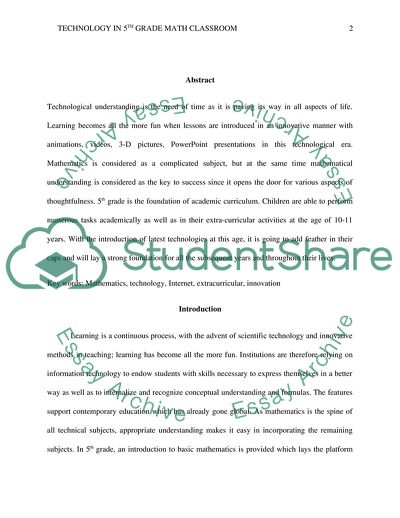Cite this document
(Technology in a 5th Grade Math Classroom Essay Example | Topics and Well Written Essays - 1500 words, n.d.)
Technology in a 5th Grade Math Classroom Essay Example | Topics and Well Written Essays - 1500 words. https://studentshare.org/education/1846944-how-technology-is-use-in-the-classroom
Technology in a 5th Grade Math Classroom Essay Example | Topics and Well Written Essays - 1500 words. https://studentshare.org/education/1846944-how-technology-is-use-in-the-classroom
(Technology in a 5th Grade Math Classroom Essay Example | Topics and Well Written Essays - 1500 Words)
Technology in a 5th Grade Math Classroom Essay Example | Topics and Well Written Essays - 1500 Words. https://studentshare.org/education/1846944-how-technology-is-use-in-the-classroom.
Technology in a 5th Grade Math Classroom Essay Example | Topics and Well Written Essays - 1500 Words. https://studentshare.org/education/1846944-how-technology-is-use-in-the-classroom.
“Technology in a 5th Grade Math Classroom Essay Example | Topics and Well Written Essays - 1500 Words”. https://studentshare.org/education/1846944-how-technology-is-use-in-the-classroom.


